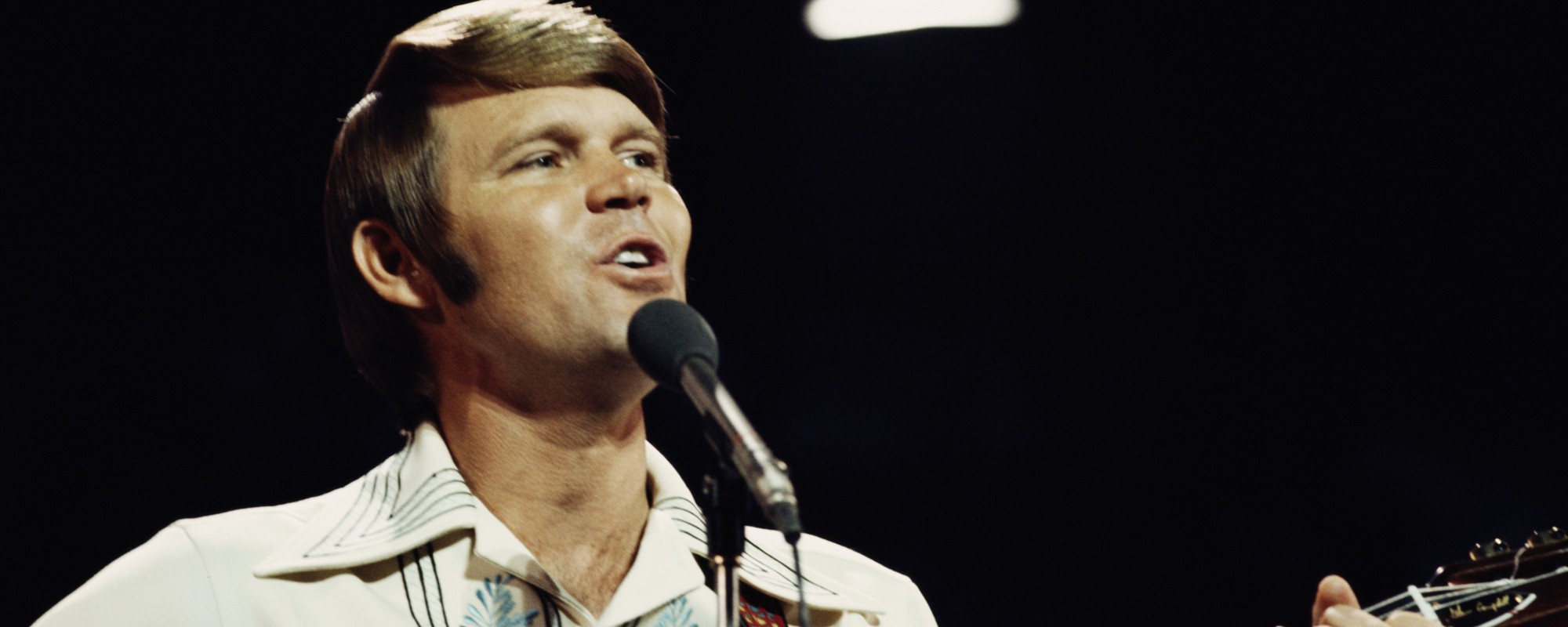Graphic designer Storm Thorgerson is probably best known as the artist behind almost every one of Pink Floyd’s album covers, but his contributions to music go beyond his work for the legendary rock band.
Videos by American Songwriter
He and his design group Hipgnosis, which he co-founded alongside Aubrey Powell, crafted eye-grabbing album art for so many acts across the rock genre. Here are six of the iconic covers designed by the artist who passed away on this day (April 18) in 2013.
1. Pink Floyd – The Dark Side of the Moon (1973)
The most iconic of his covers is, no doubt, that of Pink Floyd’s 1973 album, The Dark Side of the Moon. Depicting a prism and a beam of light against an all-black background, the simple, yet memorable image says so much.
“It related mostly to a light show,” Thorgerson told Rolling Stone of the idea behind the classic cover. “The other thing was the triangle. I think the triangle, which is a symbol of thought and ambition, was very much a subject of Roger’s [Waters] lyrics. So the triangle was a very useful – as we know, obviously – was a very useful icon to deploy and making it into the prism – you know, the prism belonged to the Floyd.”
2. Bad Company – Bad Company (1974)
An album cover doesn’t need to be flashy in order to get the point across. Another simple, but poignant, Thorgerson cover is Bad Company’s 1974 self-titled album. Black and white and so bold, the album reads “Bad Co” in block letters for a crisp design that echoes the band’s sharp, no-frills style that can be heard under the sleeve.
Thorgerson and Hipgnosis would design several other far more intricate covers for the band, including Straight Shooter (1975), Burnin’ Sky (1977), Desolation Angels (1979), and Rough Diamonds (1982).
3. Wings – Band on the Run (1973)
Wings’ Band on the Run is another classic cover produced by Thorgerson, who would go on the conceptualize many more for the band, including Venus and Mars (1975), Wings at the Speed of Sound (1976), and Wings over America (1976).
“Paul and Storm talked through the basic concept that surprisingly the ‘band was on the run’ and we all agreed that the best way put this across was like an old fashioned ‘Hollywood prison break movie’ with the convicts in a spotlight against the prison wall,” Clive Arrowsmith, the photographer of the iconic image of the band recalled.
Pulling this off, however, proved difficult for the band. “I only managed to shoot 2 rolls of film, which is only 24 exposures in total,” the photographer shared. “The group couldn’t hold the pose for long, some would be still in one frame and others would be moving in another, the real worry was that there wouldn’t be a shot where everyone was still and sharp.” He managed to find four images that worked.
4. Led Zeppelin – In Through the Out Door (1979)
Led Zeppelin’s In Through the Out Door was released with six different covers all depicting a man in a bar. However, because the album’s outer sleeve was packaged to look like a plain brown paper bag, you didn’t know what you were going to get.
The idea earned Hipgnosis a nomination for Best Album Package at the Grammys.
5. T. Rex – Electric Warrior (1971)
Based on a photo of frontman Marc Bolan performing at a T. Rex show, Hipgnosis turned the image of the star in front of stacked amplifiers into a glowing effigy of a rock god. It would be the calling card – aside from the music, of course – of T. Rex’s 1971 sophomore album, Electric Warrior.
6. Peter Gabriel – Peter Gabriel III (Melt) (1980)
Peter Gabriel’s 1980 solo studio album, Peter Gabriel III, is also referred to as Melt because of its iconic cover art à la Hipgnosis. Featuring Gabriel’s face half-melted, it makes sense. Prior to this Gabriel cover, Thorgerson was behind two more – Peter Gabriel (1977), or Car, and Peter Gabriel (1978), or Scratch. See if you can guess why.
(Photo by Chelsea Lauren/WireImage)







Leave a Reply
Only members can comment. Become a member. Already a member? Log in.